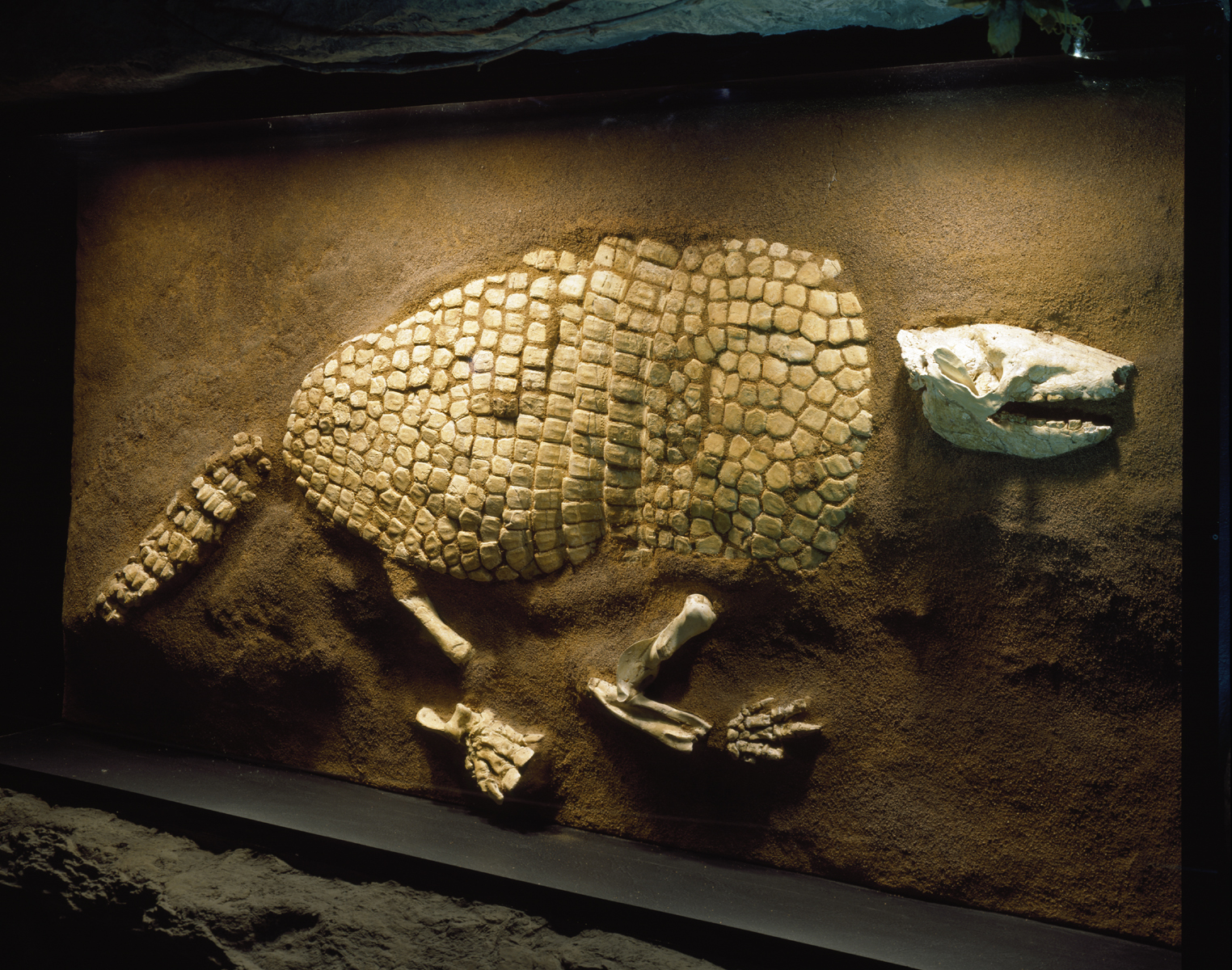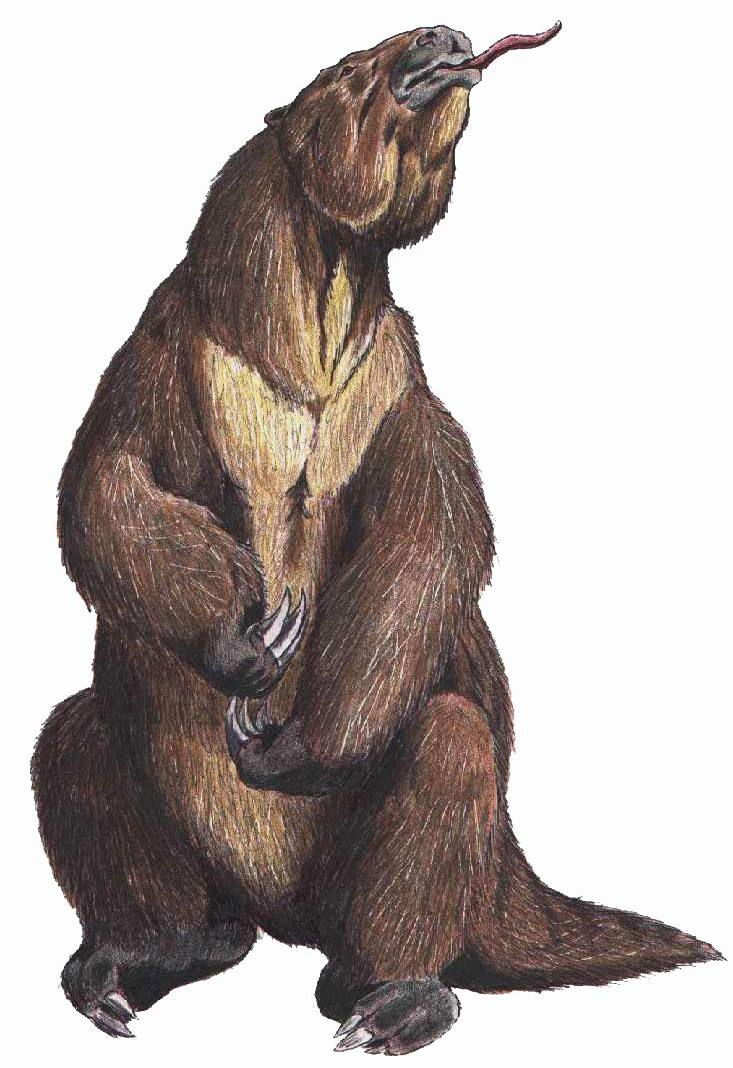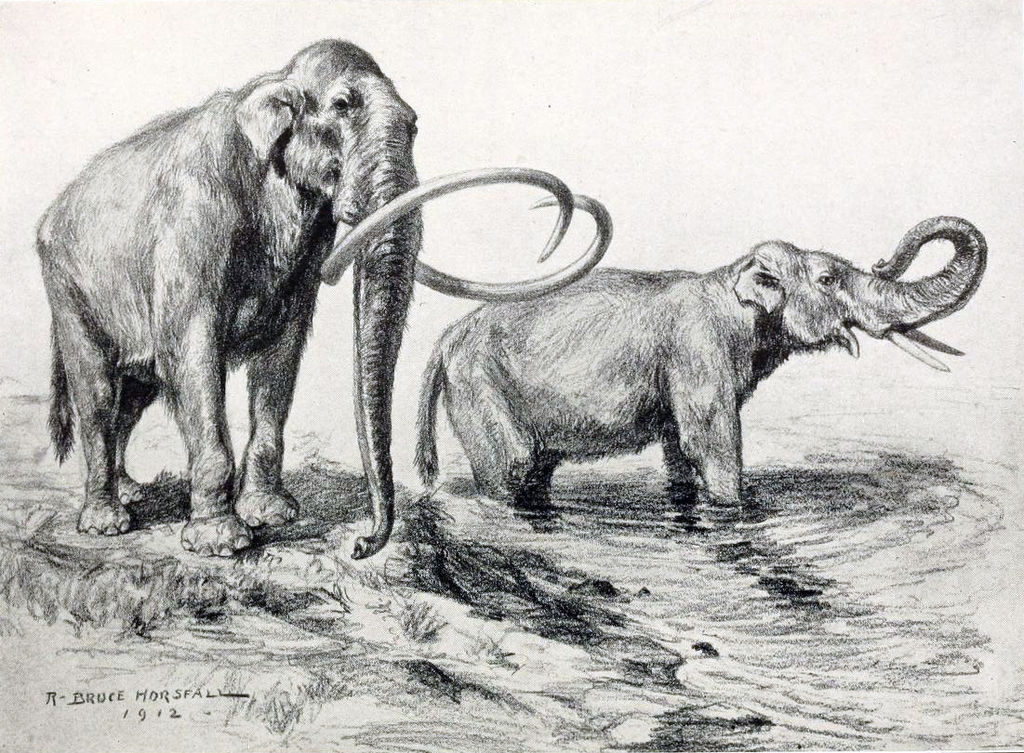The line between hallowed ground and home is a thin one in Houston. Our city isn’t exactly known for the preservationist spirit of its citizens. Looking out your window at skyscrapers or suburban expanses, you may not see any visible evidence of graveyards, but that’s exactly the problem: You don’t see them because they’re under your feet! Buried by modern development…
Are you dubious of this assertion? Well, after reading this blog I guarantee you will never rest assured that you are the only resident of your happy home. In this article we will focus specifically on prehistoric graves uncovered in our city, but rest assured, things will get even creepier in next week’s edition of Dead Things.
We will begin long ago, past the stretch of collective human memory. In this time, herds of Mammoths roamed over a cold savannah that stretched across North America. In this unfamiliar landscape, Giant Sloths thundered here and there using their huge, retractable claws to literally scratch an existence out of the land, and Glyptodons fought off saber-tooth cats.
When you think of Paleontology, you don’t think Houston, but the remnants of that epic world are here. In the Paleontology Hall of HMNS Sugarland there is displayed the skeleton of a giant armadillo, Holmesina. In North America during the Pleistocene, armadillos the size of Volkswagen Beetles roamed Texas; Holmesina is a smaller species of armadillo cousin from that era. When I say “smaller”, I mean that instead of being 7 to 10 feet long and up to 5 feet tall, they were closer to 6 or so feet long and a couple feet tall. Still quite large… Our specimen was discovered in 1955 by Florence Dawdy, along with her son and a friend on Brays Bayou, not far from Hermann Park!
Holmesina specimen at HMNS Sugarland
The next skeleton we will uncover in Houston’s proverbial closet is that of a giant sloth that was discovered not long ago in the Galveston area. Many don’t know this, but there was a time when the coast was a hundred miles further out from Houston than it is today, but as the glaciers melted at the end of the last ice age and ocean levels rose the graves of countless Pleistocene prey and several Human habitation sites were swallowed by the Gulf of Mexico. Occasionally spear points or fossilized camel bones will wash up on certain beaches in the area, like High Island.
Megatherium, a type of ground sloth. Note the giant claws, which were retractable,like a cat’s claws!
A Columbian Mammoth was discovered in a sand pit in the town of Clute near the Lake Jackson area in 2003. Columbian mammoths are the less hairy cousins of the famous Woolly Mammoths. Both species thrived in the vast grasslands that stretched from Minnesota to Mexico 10,000 years ago. The Woolly’s tended to stay further north, while the Columbians roamed in the warmer Southern regions.
Columbian Mammoths
The Columbian Mammoth was named after Christopher Columbus, the most famous explorer of the New World, because this species of mammoth is unique to the Western Hemisphere. The one found in Clute was the first mammoth to be discovered in the Texas Gulf Coast area. The mammoth is nicknamed Asiel, and if you’re ever in the area, you can stop by “Asiel’s Restaurant”, which boasts a replica of the skull, and an exhibit including some real fossils of deer, camel, and giant sloth that were also discovered in the area.
So there are indeed a few paleontological discoveries that have unexpectedly popped up in the Houston area. And who knows, maybe the next find is under you right now! Next week we will turn the dial of geological history forward to the era of human occupation to discuss some more intriguing specimens found lurking beneath the surface of our city.
Incidentally, we happen to have an entire Hall of Paleontology devoted to prehistoric North America here at HMNS Sugar Land, so next time you’re visiting, be sure to check that out. We have examples of all three animals discussed in the article.








